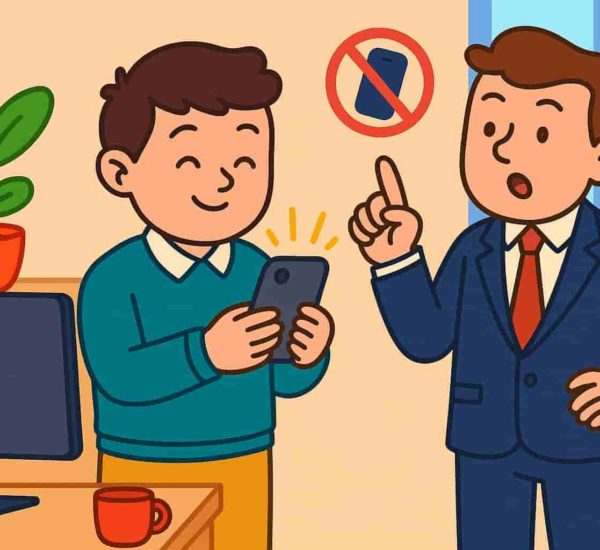Boomerang employees generally leave a company for a better profile or salary but eventually return. With managers often regretting great employees slip through their fingers due to budgetary restrictions, rehiring these employees is becoming a common practice. With people like Steve Jobs and LeBron James returning as boomerang employees, it is clear that this hiring trend is here to stay.
Some companies prefer not to rehire employees due to questionable loyalty. But there are many others who don’t mind letting gems back in the system.
In this article, we cover the pros and cons of boomerang hiring. We also look into the best practices across industries to rehire boomerang employees.
Who Are Boomerang Employees?
Boomerang employees are employees who get hired by their previous employers once again. For understanding the meaning of boomerang employees, look at former employees who rejoined your organization after quitting. Rehiring former employees who quit is no longer considered taboo. Organizations rehire them based on their previous performance, skills, and reasons for leaving the company.
Advantages of Hiring Boomerang Employees
The advantages of boomerang hiring are listed below.
Little to No Training for Boomerang Employees
Boomerang employees have experience working in your organization. Therefore, they need little or no training to meet the work requirements. Also, they will be familiar with the workplace ethics, rules, and objectives of your company. Consequently, they will adjust faster to ramp up than truly new hires.
Rehiring Boomerang Employees is Cost-effective
Hiring talented new hires may need a lot of persuasion skills and sweet talk. It is because candidates tend to keep their options open by interviewing with various companies simultaneously.
Boomerang workers are likely to be unhappy with their present situation. When they reapply, it is clear that they enjoyed the work culture and that is a massive win already. Recruiters can woo rehire a former employee with competitive compensation and benefits packages.
Boomerang Hiring Helps HR Retention Strategies
You can rehire previous employees and use them as subtle examples for current employees. When a former employee rejoins the company, it is clear that they enjoyed working at this one better than the competition. In that case, current employees may be more likely to question their own reasons for looking to shift.
The boomerang employee may be back because of the work environment, paid time off, payment policies, learning opportunities, or other factors. It is HR’s job to advertise this internally to improve the retention rate of the organization. This is one of the more subtle benefits of boomerang hiring.
Rehiring Laid Off Employees Utilizes Their Prior Experience
By recruiting the employees who are eligible for rehire, your company will benefit from their previous experience and current expertise. Boomerang employees might have developed new skills, perspectives, and ideas while working in their new organization. You can channelize those skills and perspectives to redefine some of your working practices or processes.
Things to Consider Before Boomerang Hiring

Before rehiring laid-off employees who quit your company some years or months ago, you should consider a few things. For example, you should go through your organization’s rehire policy and procedures. It will help you determine whether a former employee is eligible for rehire or not eligible for rehire.
By going through these rules and procedures, you will know how to answer the question, “can you rehire a terminated employee?” You can also consider rehiring laid-off employees if the rehiring policies of your company allow you to do so.
While rehiring previous employees, you should get the crucial boomerang employees statistics in advance. You should get data on whether the performance of the boomerang workers improves, deteriorates, or remains unchanged after rehiring. Research the industry or niche of your company, or utilize the research that has been already published.
Compare the performance of boomerang employees with the existing employees who have been promoted, considering their contribution and dedication. It will help you know whether the boomerang workers will be as productive as the freshly recruited staff. After detailed research on the thousands of former employees who were rehired, we found these interesting patterns.
Predictable Performance
The performance of the former employees is similar to what they exhibited previously. Therefore, their productivity, working patterns, and contributions are predictable during their second stint with your company.
It was noted that some boomerang employees tend to leave their organizations later. Also, their reasons for quitting are somewhat similar to why they resigned from the organization previously.
The Decline in Performance Over a Period
It was observed that some former employees tend to underperform compared to internally promoted workers and freshly recruited staff. A lack of commitment or motivation could be the reason behind their lower productivity and performance.
Out Performing Boomerang Workers
Our research indicated that the employees who’d quit earlier for positive or neutral concerns are good prospects for your organization. It is because they are likely to outperform the fresh and existing talent of your organization. The performance improvement is especially noteworthy during the first and second years after getting rehired.
Is it a Good Decision to Rehire Former Employees?
Indulging in boomerang hiring can have positive or negative implications, depending upon the rehired employees’ performance. In most cases, organizations avoid rehiring former employees who’ve left their organization after a dispute. If you have little or no experience in hiring former employees, you can look at the rehiring strategies implemented by the world’s top MNCs.
As per the Walmart rehire policy, the company does not recruit boomerang workers terminated earlier due to legal reasons. However, for termination due to other reasons, they must wait at least six months before becoming eligible for rehire. Also, the workers who had left on a positive note can reapply only 90 days after leaving the organization.
The rehire policy and procedures vary as per the company’s sector. If you look at the FedEx rehire policy, you will notice that it is a lot more lenient. Also, it allows former employees to rejoin as few as 30 days after quitting their jobs. The boomerang jobs offered by companies such as these come with lenient rules, as they need experienced handlers constantly.
As per the Amazon rehire policy, the former employees who left due to involuntary termination are not considered for rehiring.
To determine how long after a layoff can a company rehire, the employees should contact their immediate managers or HR. If you keep the policies of the rehiring flexible, you will increase the chances of recruiting talented former employees again. The fact remains, the boomerang principle has become popular with most global organizations today.
What are the Best Practices to Rehire Employees?
Creating a Talent Pool
As a recruiter, you can create a talent pool of your organization’s existing and previous employees. By doing so, you can ensure that your previous employees stay in touch with you. Also, they will remain updated with the latest vacancies in your organization.
Further, you will be able to know the status of your former employees with their current organization. It might help you to extend an offer to them when they are thinking of switching their job.
Your boomerang hiring talent pool must not contain only those employees who are, and were, full-time employees in your organization. It should also comprise interns, part-time workers, freelancers, and candidates who could not join your organization previously.
Drafting a Rehiring Policy
Before recruiting boomerang employees, you should have a well-researched, extensively documented rehiring policy in place. It should include the terms and conditions that apply to the employees who want to rejoin your company.
Draft a rehiring policy to include only those former employees who had left your organization by serving the notice period. Implementing a strict rehire policy and procedures is necessary to keep unwanted former employees away from your company.
However, you may include some special conditions that allow former terminated and laid-off employees to join after a specific period. You can always take references from the rehiring policies implemented by the top players in the market.
Interviewing Former Employees
Many organizations tend to skip the interview process while recruiting their former employees. They may do this to fill up a position quickly or due to an upcoming deadline for a project. Rehire your previous employees only if you have a proper reason to do so. Generally, you should make them go through a formal interview before you onboard them.
You can ask them questions related to their previous exit to understand their expectations while rejoining your firm. Include the questions that are standard for new hires too. It will help you to determine whether a former employee is competent enough to be rehired or not.
Reboarding Boomerang Employees
Reboarding boomerang employees is essential if your organization has undergone significant changes after their resignation. You can implement a separate reboarding process for these former employees as they are already aware of most aspects of your organization. The key factors to focus on for reboarding boomerang workers are as follows:
- Changes or updates in the technologies that the former employees need to know to perform their job roles well
- Remote working policies adopted by your organization because of COVID-19
- New reporting and collaborating processes adopted by your firm
Discussing Remuneration and Job Role Transparently
You should be unsurprised if a former employee expects a senior position after rejoining your firm. However, offer them seniority only if their current experience makes them eligible for it and not because they left your firm previously upon being denied the same.
Furthermore, if they expect an enhanced package or remuneration, you should analyze whether they deserve it. If yes, you can offer them a new, increased package. Otherwise, ask them to begin working at the same salary with an assured performance-based promotion after a few months.
Taking Insights from the Team
As an HR manager or recruiter, you may be happy to rehire boomerang employees. However, if their prospective team is unhappy with this news, you might have to think carefully before rehiring them.
Generally, you can take suggestions regarding boomerang workers from the team in which they were working before. If the former employee will join a new project, gauge whether they will fit well in the new team.

Final Words on Boomerang Hiring
Before deciding whether former employees are hireable, you should cross-check the reason for their previous exit. Also, strengthen your talent acquisition process by creating a thorough rehiring procedure well-supported by documents and regulations.
Considering the benefits including less time and lower costs required for onboarding a former employee, you can contemplate recruiting your previous staff. However, do not forget to evaluate their past performance, as most probably, it will remain the same after rejoining.
Hire a previous employee only if your instincts allow you to do so. Also, you can ask them to contribute at least as much as they used to before exiting your company. Sometimes, you may have to determine whether a former employee is harboring negative feelings against your organization. Therefore, you must analyze the risks and benefits properly and use smart hiring tips before recruiting such employees.





